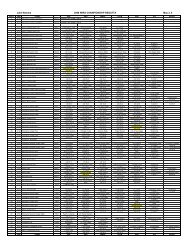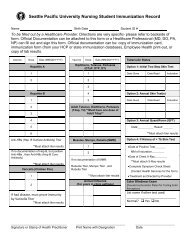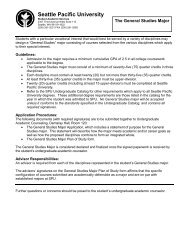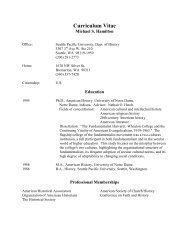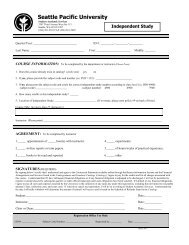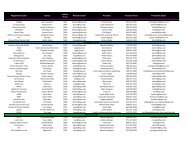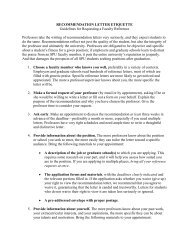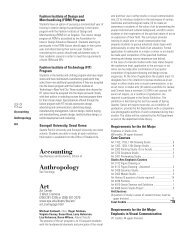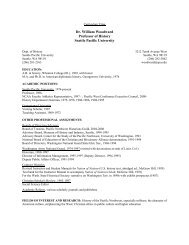115 Premenstrual Syndrome and Premenstrual Dysphoric Disorder ...
115 Premenstrual Syndrome and Premenstrual Dysphoric Disorder ...
115 Premenstrual Syndrome and Premenstrual Dysphoric Disorder ...
Create successful ePaper yourself
Turn your PDF publications into a flip-book with our unique Google optimized e-Paper software.
1952<br />
<strong>115</strong><br />
<strong>Premenstrual</strong><br />
<strong>Syndrome</strong> <strong>and</strong> <strong>Premenstrual</strong> <strong>Dysphoric</strong> <strong>Disorder</strong><br />
Abstract: The > symptomatology associated with the menstrual cycle in women ranges<br />
broadly in severity. > Molimina is the subclinical symptomatology affecting up to 90%<br />
of all women. > <strong>Premenstrual</strong> <strong>Dysphoric</strong> <strong>Disorder</strong> (PMDD) is the most severe form of<br />
> premenstrual syndrome (PMS). PMDD is debilitating <strong>and</strong> consists mainly of affective<br />
symptomatology that interferes with quality of life (QOL). While the etiologies of PMS/<br />
PMDD remain unknown, symptoms are both physiological <strong>and</strong> psychological <strong>and</strong> as such<br />
an interdisciplinary biopsychosocial approach is needed to investigate the burden <strong>and</strong> decreased<br />
QOL in sufferers. This burden is considerable as up to 30% of women suffer from PMS<br />
<strong>and</strong> 5–6% have PMDD with nearly 4 years of projected disability for the latter. Published<br />
treatment guidelines recommend behavioral modifications as first-line therapeutic interventions<br />
for PMS with effective pharmacological options approved for PMDD. However, the<br />
efficacies for behavioral interventions are not well established, in part due to weaknesses in the<br />
research methods used to test a treatment effect, <strong>and</strong> resultant inconsistencies in findings. In<br />
addition, some strategies involving daily effort (e.g., > Cognitive-Behavioral Therapy) may be<br />
impractical in the face of the unique characteristics of cyclic symptoms. Other strategies such<br />
as aerobic exercise may be effective, but require motivation to perform during a period of time<br />
when sufferers feel particularly poor. As such, aerobic exercise by itself may be an unrealistic<br />
treatment option. Treatments that can reduce <strong>and</strong>/or manage > stress, elevate mood, <strong>and</strong> curb<br />
physical discomforts are needed. However, it may be impracticable to expect therapeutic<br />
success in all of these areas from a single intervention. Current research is therefore investigating<br />
complementary combinations of pharmacological <strong>and</strong> behavioral treatments as possible<br />
management strategies for PMS/PMDD.<br />
List of Abbreviations: AAFP, American Academy of Family Physicians; ACOG, American<br />
College of Obstetricians <strong>and</strong> Gynecologists; CAM, Complementary <strong>and</strong> Alternative Medicine;<br />
CBT, Cognitive Behavioral Therapy; DSM, > Diagnostic <strong>and</strong> Statistical Manual; FDA, Food<br />
<strong>and</strong> Drug Administration; HPA, Hypothalmic-Pituitary-Adrenal; HR-QOL, Health Related<br />
Quality of Life; ICD, > International Classification of Diseases; NIMH, National Institute of<br />
Mental Health; PMDD, <strong>Premenstrual</strong> <strong>Dysphoric</strong> <strong>Disorder</strong>; PMS, <strong>Premenstrual</strong> <strong>Syndrome</strong>;<br />
QOL, Quality of Life; SSRIs, > Serotonin Specific Reuptake Inhibitors<br />
1 Introduction<br />
It is common for women of child-bearing age to experience discomfort during the days prior<br />
to menstruation. For some women, these premenstrual symptoms are severe enough to > affect<br />
their quality of life (QOL) by negatively affecting behavior <strong>and</strong> interfering with daily<br />
activities. According to Campagne <strong>and</strong> Campagne (2007), ‘‘More women <strong>and</strong> their families<br />
are affected by the physical <strong>and</strong> psychological irregularities due to premenstrual symptoms<br />
than by any other condition’’ (p. 4). Still, others seem to remain nearly symptom free or have<br />
the ability to cope with their discomforts. Attempts at underst<strong>and</strong>ing the nature of these<br />
extremes has led to the adoption of terms such as molimina, which describes the typical<br />
subclinical symptomatology affecting up to 90% of all women, <strong>Premenstrual</strong> <strong>Syndrome</strong><br />
(PMS), which is the diagnosis given when symptomatology is severe enough to interfere<br />
with daily activities <strong>and</strong> negatively affect well-being, <strong>and</strong> <strong>Premenstrual</strong> <strong>Dysphoric</strong> <strong>Disorder</strong><br />
(PMDD), the diagnosis for severe PMS with a specific focus on affective symptomatology.





